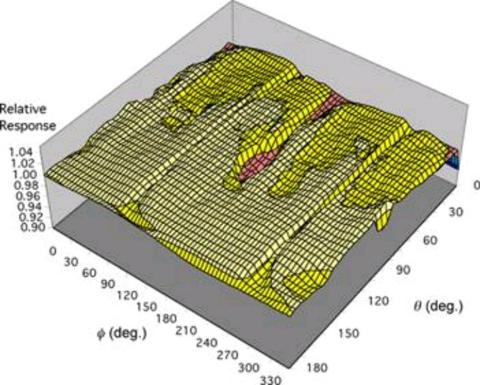Realization of the lumen
The unit of total luminous flux, lumen, is realized from the candela using the Absolute Integrating-Sphere Method. While most national laboratories calibrate luminous flux using a goniophotometer, NIST developed its unique method of using an integrating sphere in 1995.
The total flux of a lamp inside the sphere is calibrated against a known amount of flux introduced into the sphere from an external source through a calibrated aperture. The introduced flux from the external source is determined by the illuminance, E, measured at the aperture plane and the aperture area, A. Thus, the total flux of the lamp inside the sphere, measured against the flux from the external source, is determined from

where yint is the photometer head signal for the internal source and yext is the photometer head signal for the external source. The parameter cf is a correction factor for various non-ideal behaviors of the integrating sphere.
Correction for the spatial nonuniformity of the integrating sphere is a key element of the measurement and is obtained from the spatial mapping of the sphere responsivity, measured by a rotating beam sphere scanner. The uncertainty of the NIST luminous flux unit is 0.50 % (k = 2).
The Absolute Integrating-Sphere Method is applied to routine calibration measurements of total luminous flux using the NIST 2.5 m sphere. The sphere system is automated so that the sphere responsivity is calibrated for each test lamp measured, based on the illuminance measurement of the external source by the standard photometers, eliminating the need for luminous flux standard lamps. By bringing the luminous flux calibration into a detector-based measurement procedure, uncertainties associated with the use of working standard lamps are removed. Lower uncertainties are further achieved by shortening the calibration chain. In addition, the measurement is simplified with the self-absorption of test lamps that are automatically corrected.


Contacts
-
(301) 975-2332

